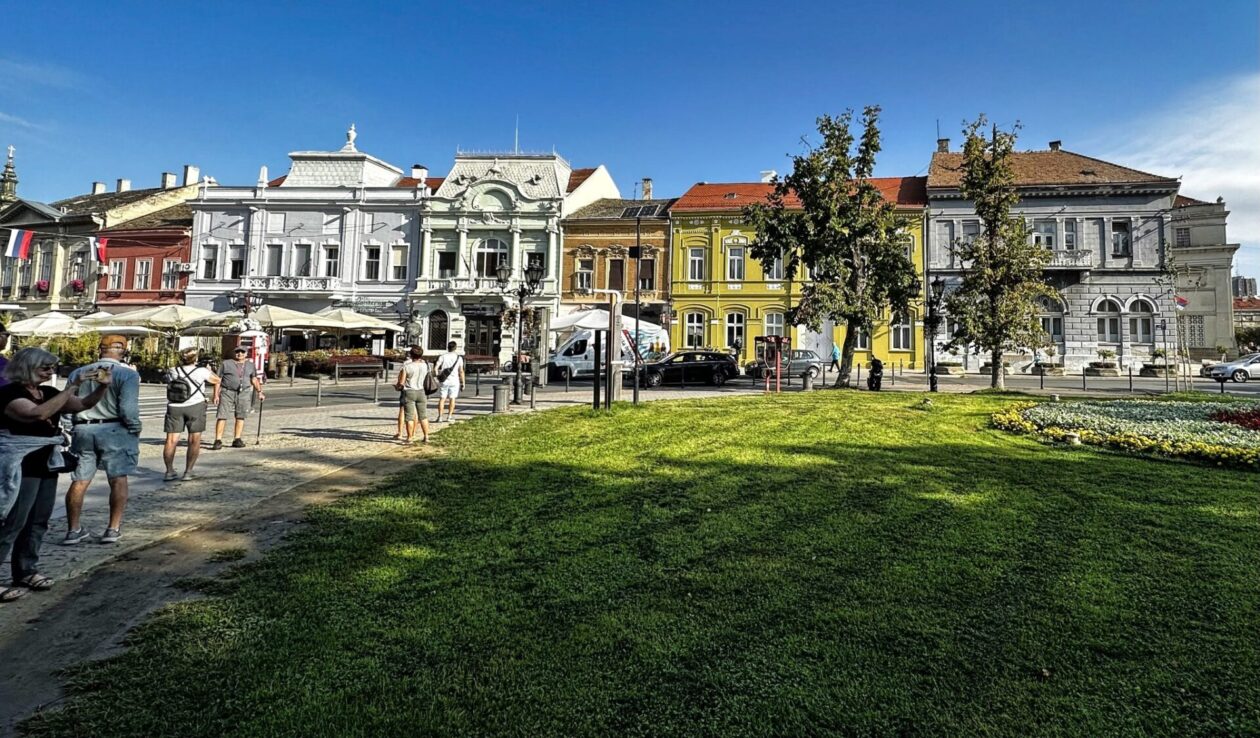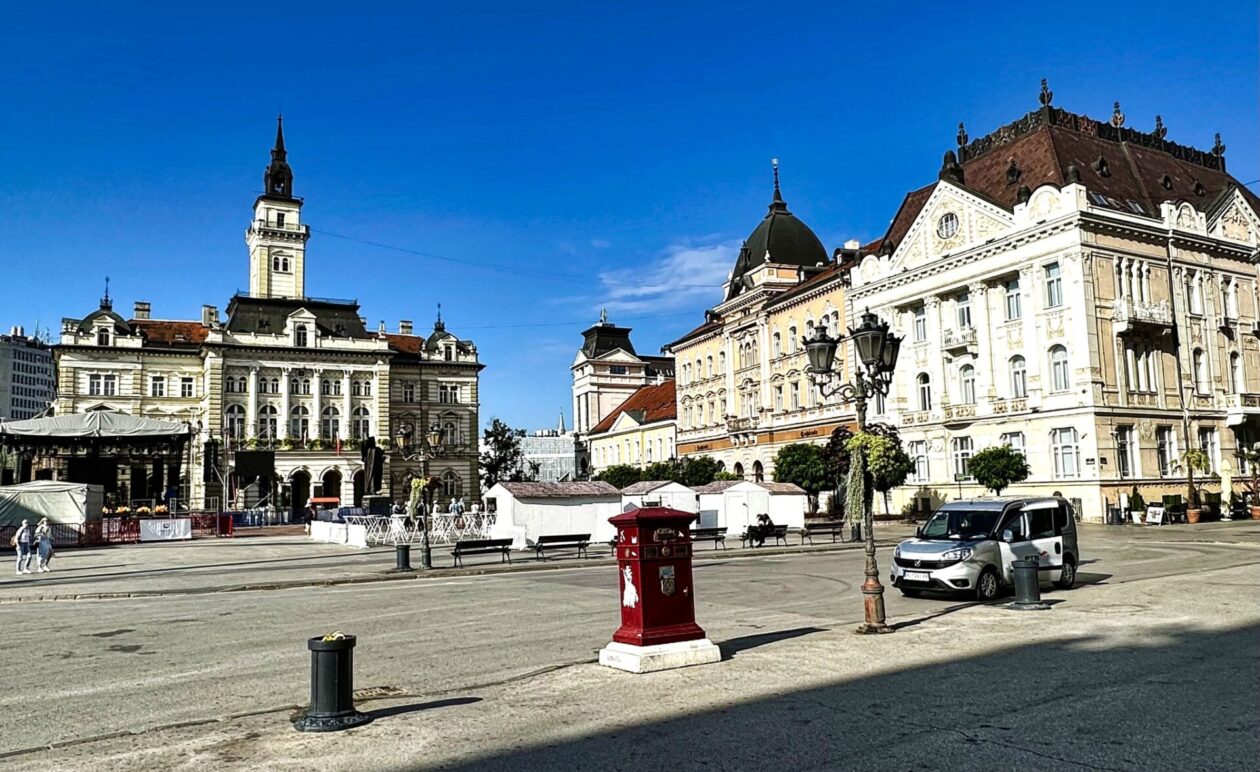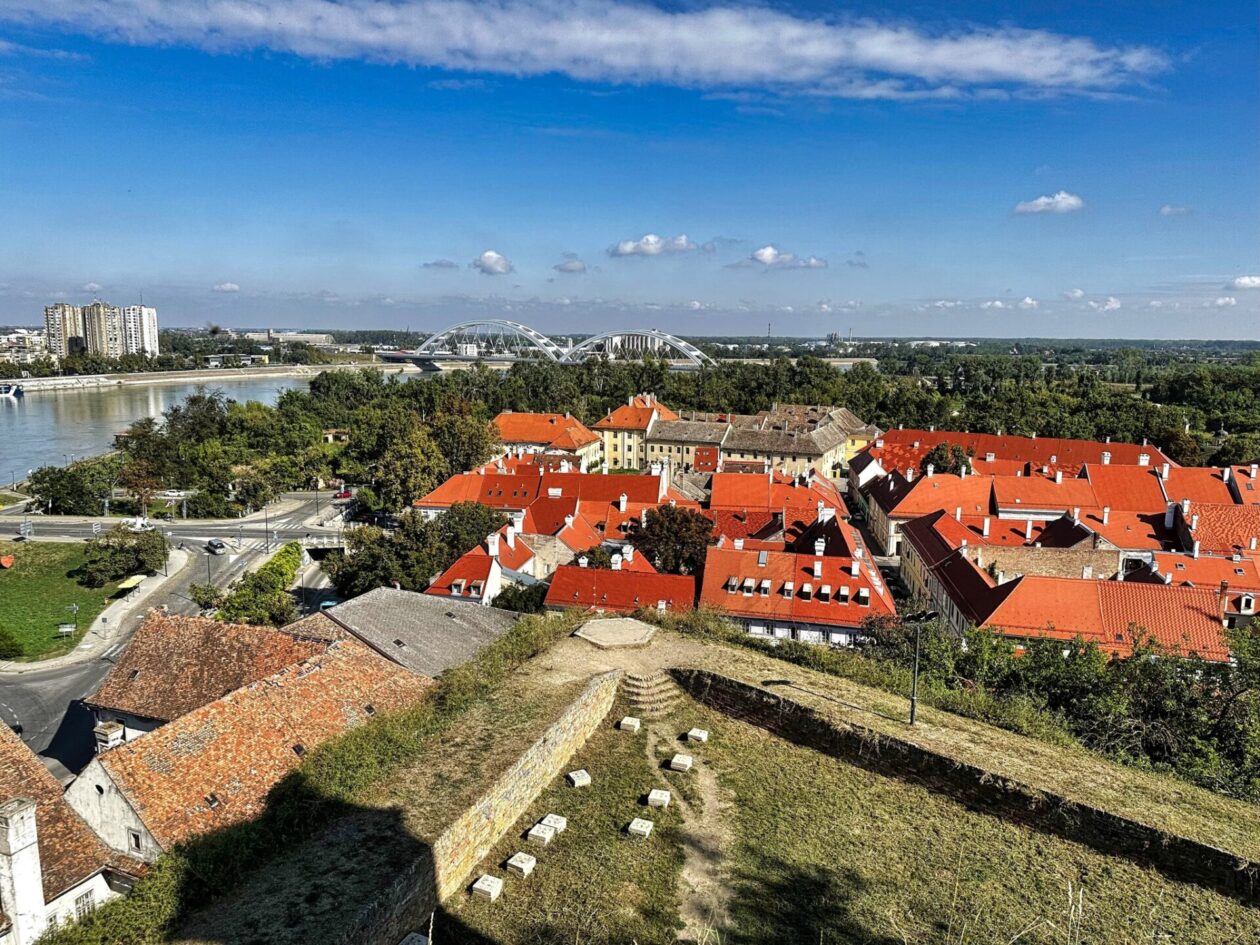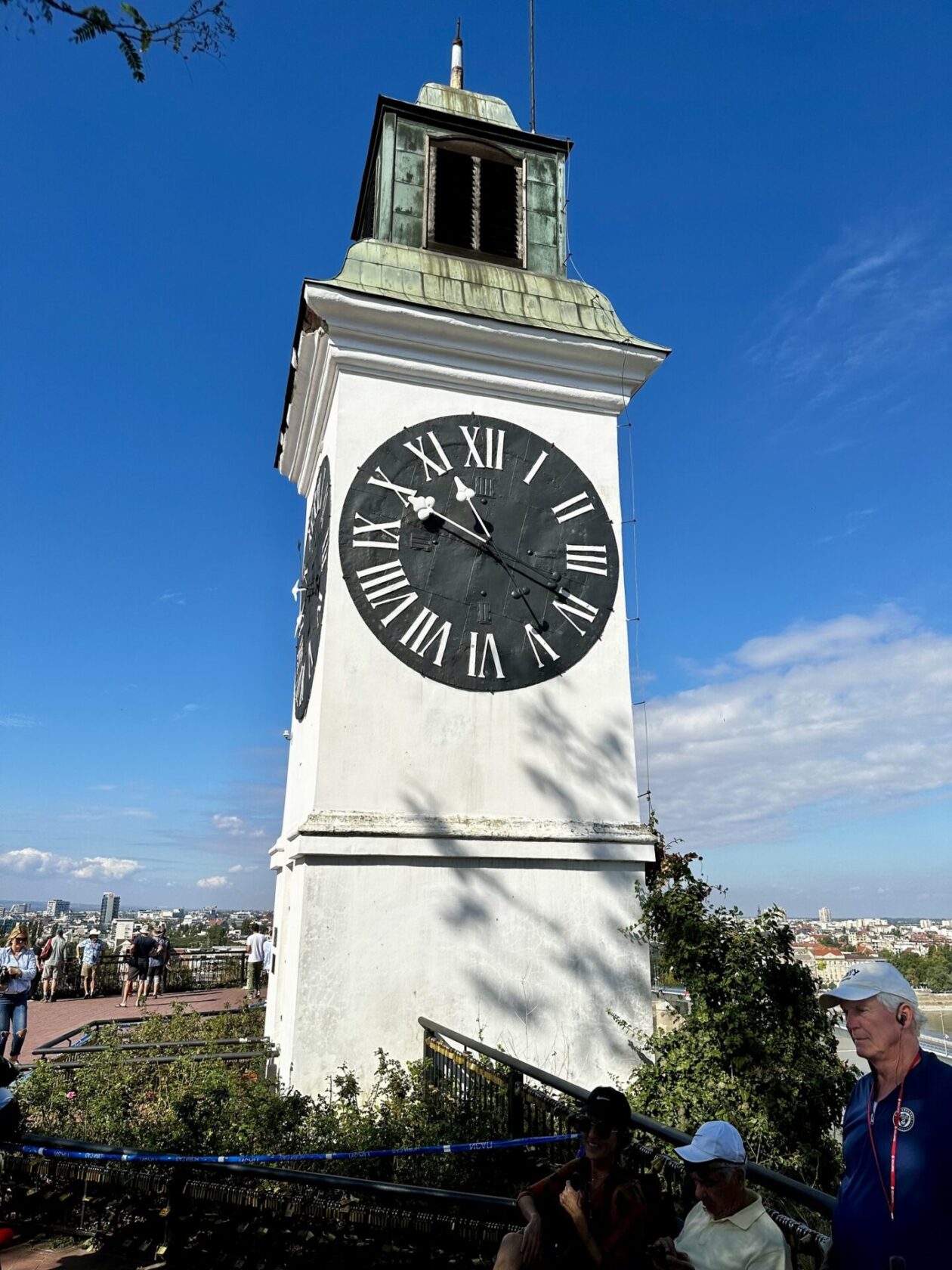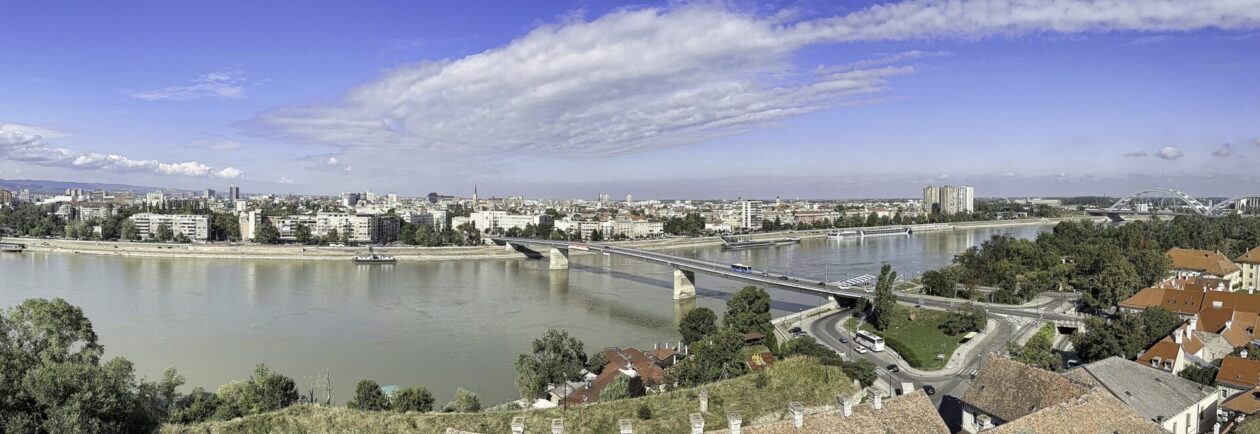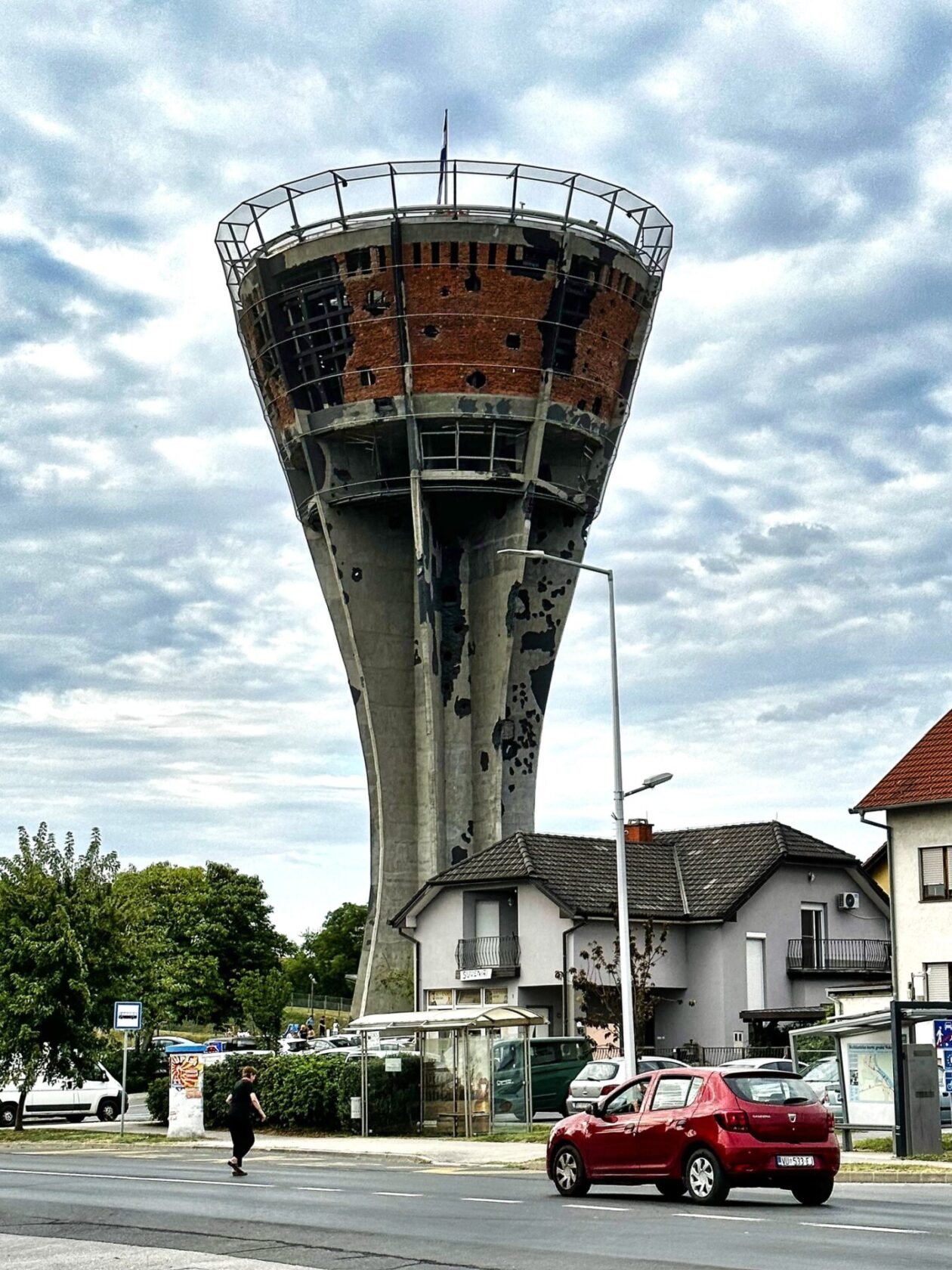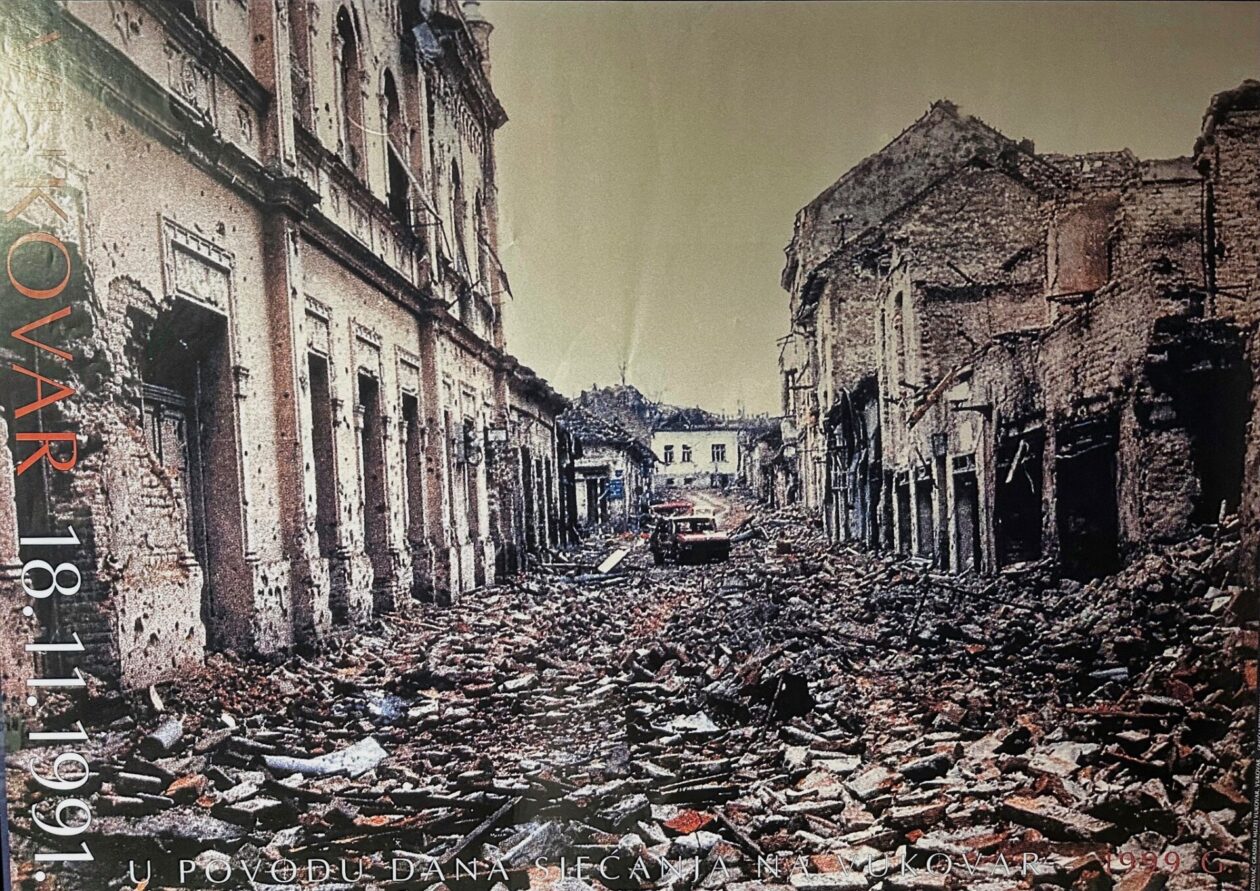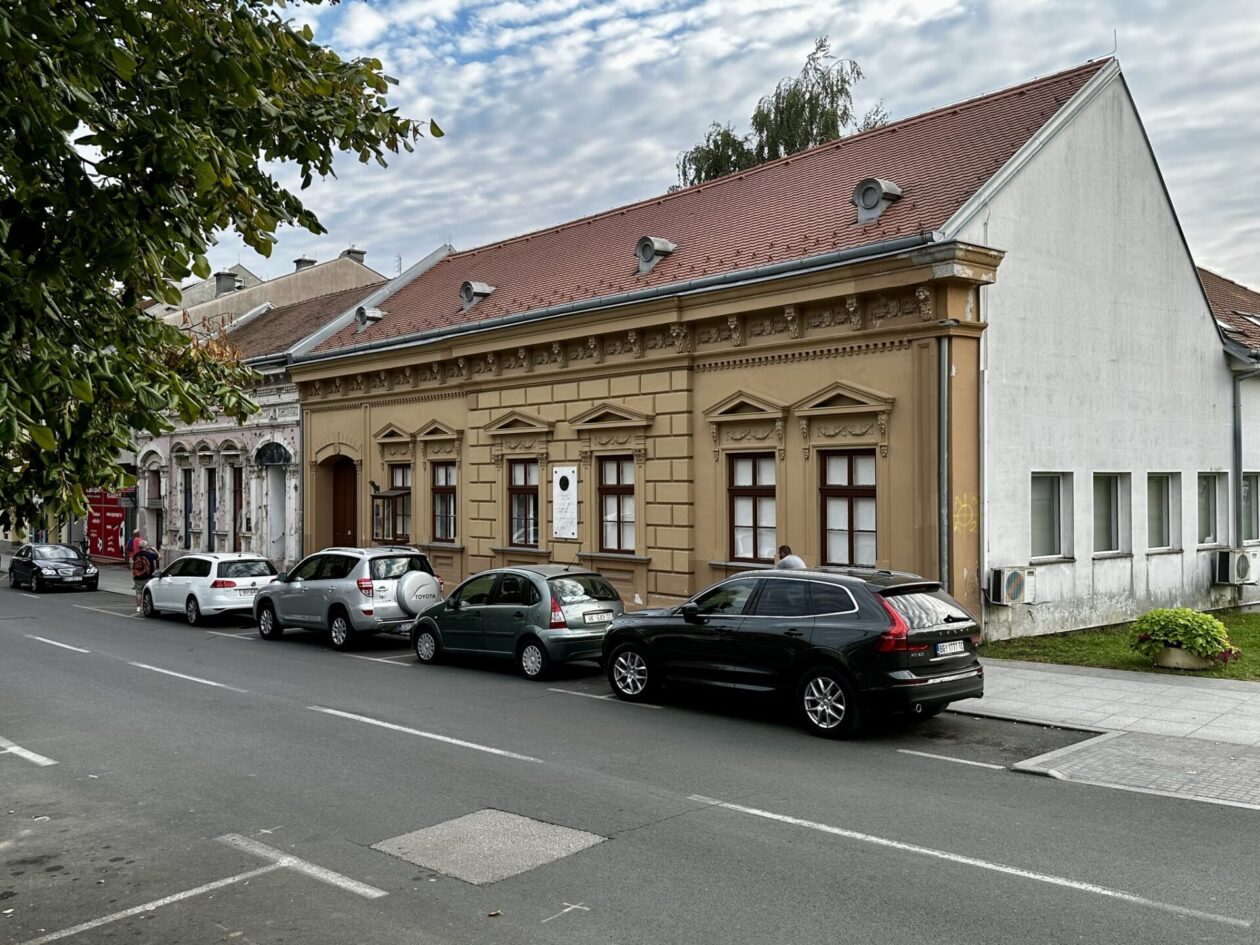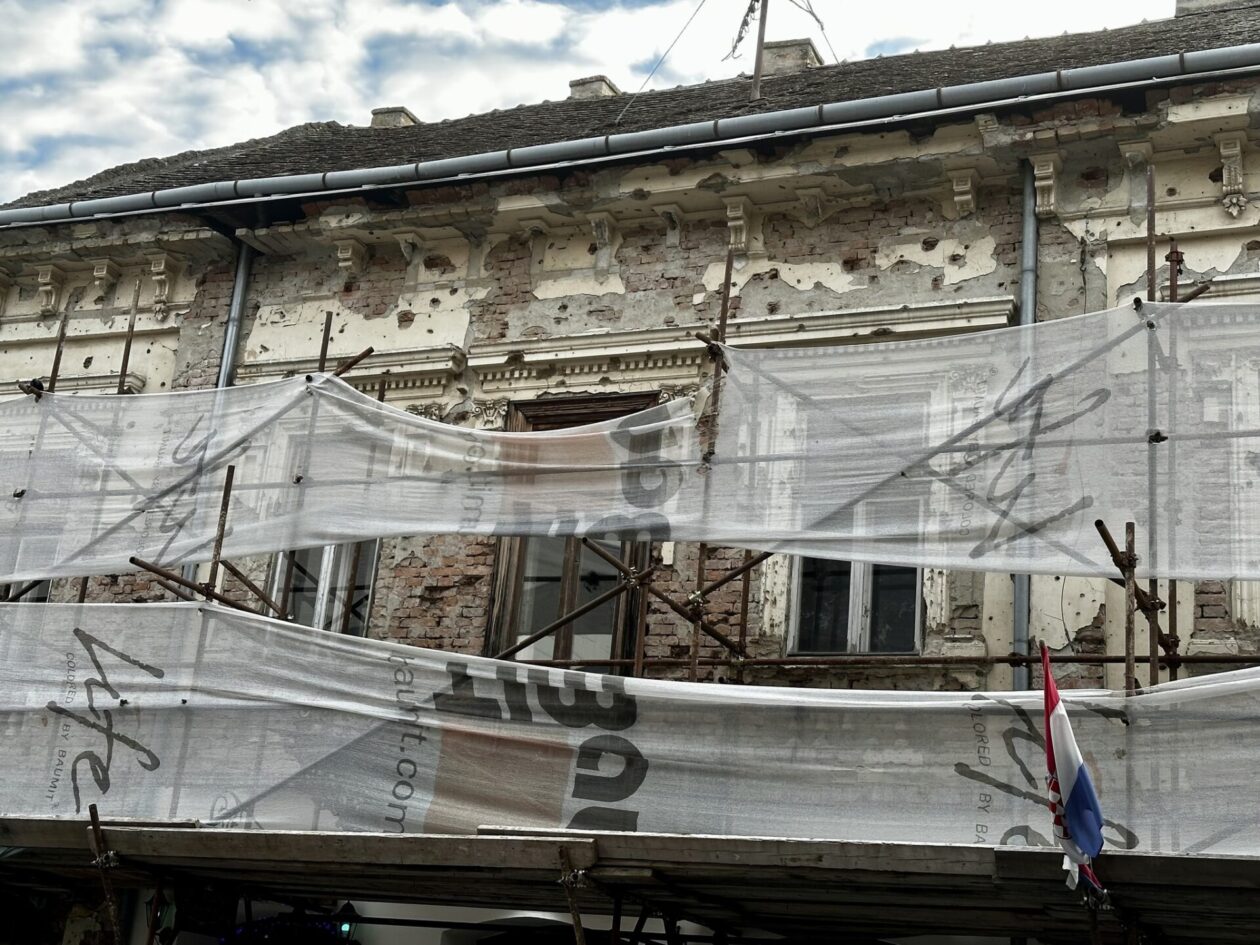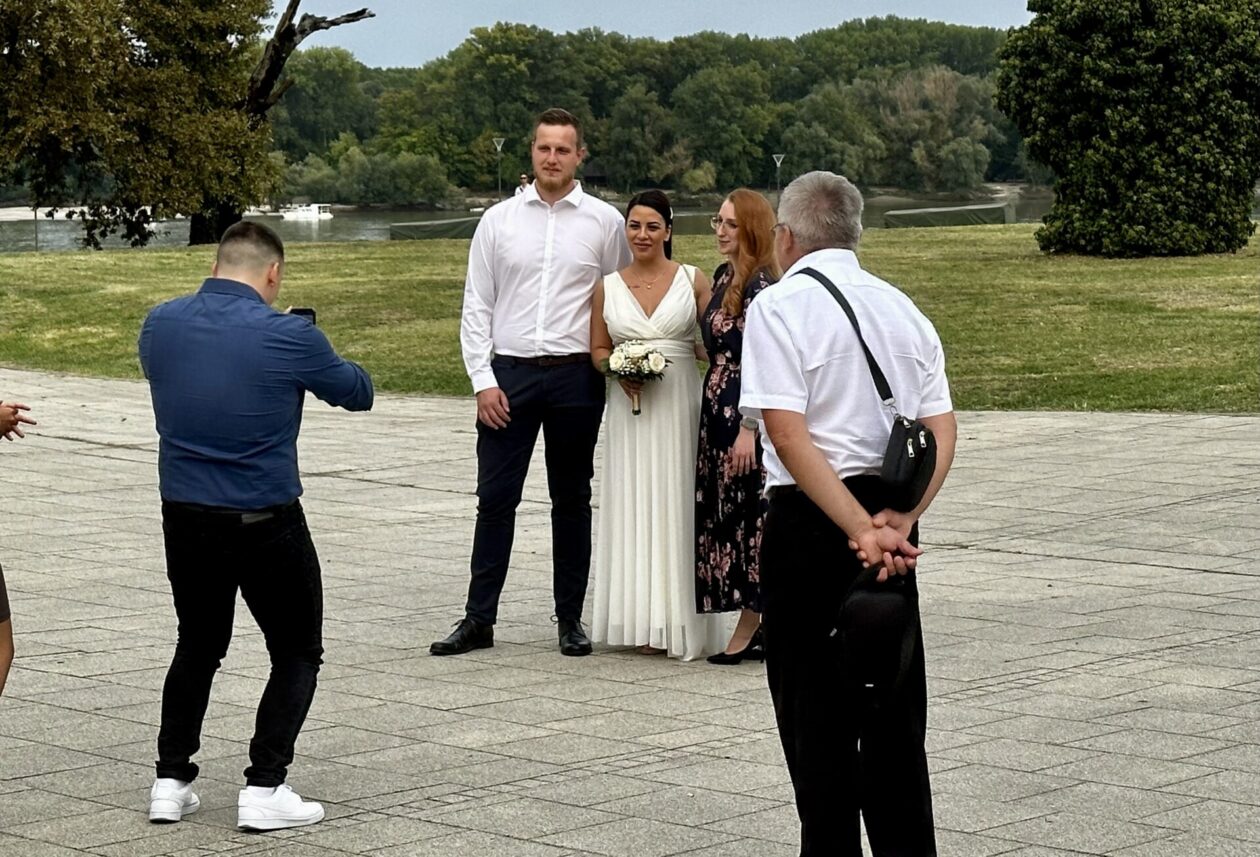This is part of a series called Pan European Sojourn 2023
Show More Posts
- The start of our Pan European Sojourn
- And we’re off — first stop Palma de Mallorca!
- Alicante, Spain
- Sète and Aigues Mortes, France
- St. Tropez and Gassin, France
- Portofino and Camogli, Italy
- Paris and Angers, France
- Bucharest, Romania
- Into the Carpathian Mountains — Peles Castle
- Brasov and Sighisoara, Romania
- Bran Castle and the legend of Dracula!
- Vidin, Bulgaria
- Valiko Tarnavo and Arbanasi, Bulgaria
- Rolling down the (Danube) river and Golubac Fortress, Serbia
- Belgrade, Serbia
- Novi Sad, Serbia and Vukovar, Croatia
- Pécs, Hungary
- Budapest, Vienna, and end of trip
This morning we visited Novi Sad, a truly multicultural city in Serbia. While most of the places we have visited during this trip had significant Ottoman impact through occupation of up to 500 years, no such thing happened here as the Ottoman Turk advance stopped a few miles from here and never started up again. Hence, the people here have much more in common with the Austro Hungarians than they do with anyone else. With the exception of being shelled by the Austro Hungarians from the Petrovaradin Fortress across the Danube (they took revenge for the Serbs not siding with them) and the NATO bombing of bridges and other infrastructure in 1999 during the Yugoslavian Civil War, the city was left to flourish. In fact, the Austro Hungarian Empress provided land for the Serbs to build the city. Since most of the artisans came from this community, they were in high demand, the local wealth grew, and the city prospered. Consequently, walking through the city center provided many beautiful examples of multiple architectural styles. The resultant cosmopolitan atmosphere attracted other artists, professionals, etc. to the city, including many non-Serbs. This earned Novi Sad the title “The Athens of Serbia.” Across the river, we visited the Petrovaradin Fortress which is the second largest fortress in Europe. It took over 70 years to build and was claimed to be impregnable, although that was never put to the test in that it was never attacked. In addition to the large number of outer walls, the fortress also has four floors under the ground with nearly 10 miles of connected tunnels. Apparently, Austrian kings used the fortress as a place to store their riches and it is rumored that some of the treasure has never been found. One other interesting elements of the fortress is the clock tower that has its minute and hour hands reversed so the boats on the Danube could at least tell the hour.
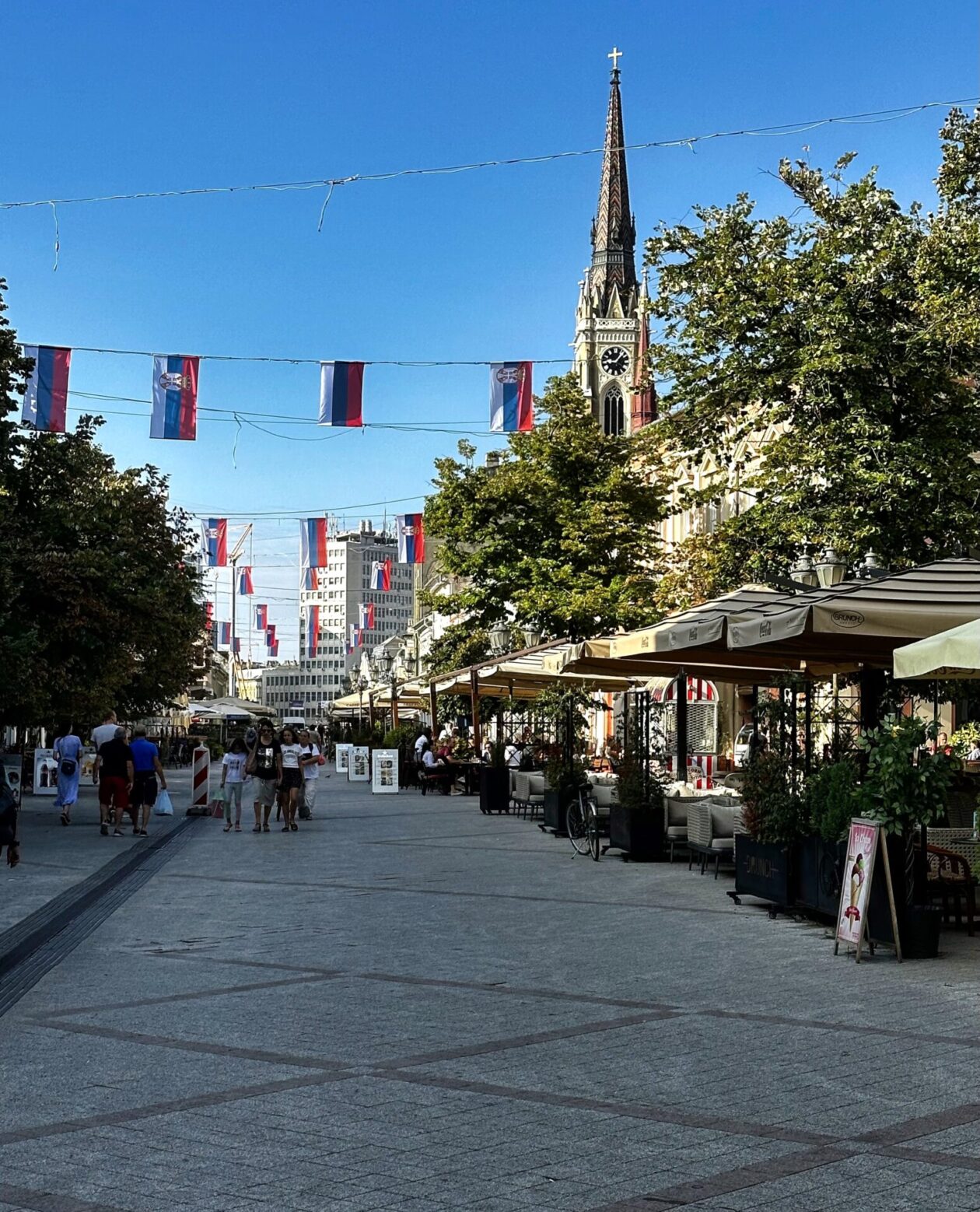
Definitely a walkable city with lots of outdoor cafes to watch the people go by. The problem is we didn’t see many people!
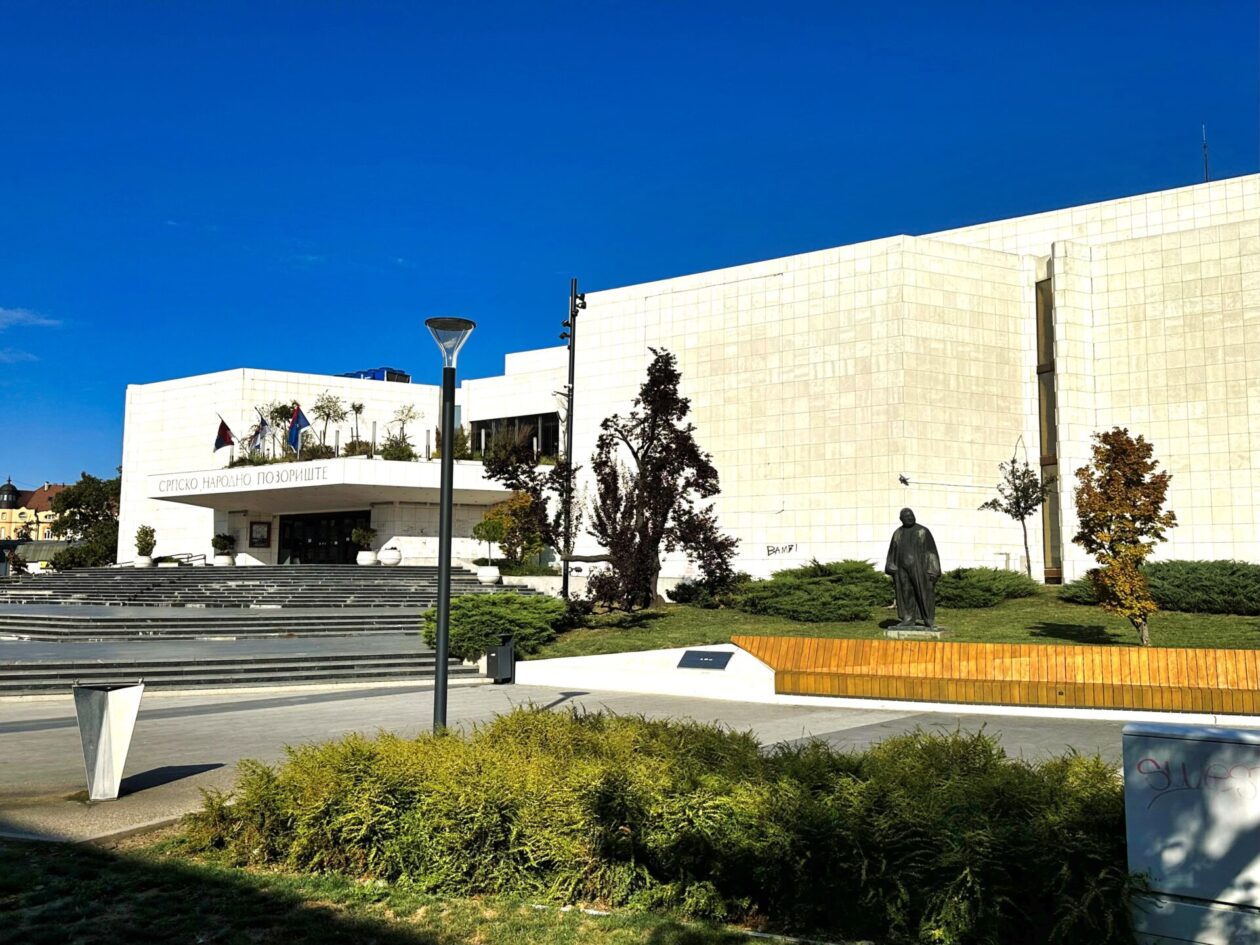
Three is also a lot of public art and a lovely performing arts center. You would never know that this place had been touched by a recent war.
In the afternoon, we traveled to Vukovar which is locate in the northeastern part of Croatia at the confluence of the Vuka and Danube Rivers, wedged in the historical regions of Slavonia and Syrmia. A beautiful town of around 40,000 people became the site of a nearly 90 day siege during the Yugoslavian Civil War/Croatian War of Independence in 1991, resulting in the deaths of around 3000 people and the total destruction of the city. This was done by Serbian paramilitaries, aided by the Yugoslav People’s Army. At the end, only Serbs were allowed to stay in the city, despite the fact that they represented less than 40% of the population. During the same period, the same aggressors conducted one of worst massacres of the war, killing 300 hospital prisoners and burying them in a mass grave that was only discovered a year later. Walking around the town, it was difficult to imagine that this town had basically been leveled such a short time ago. They kept their old water tower, which became the focus point for shelling, as a reminder of what they endured. Hearing the story from our Croatian guide finally put a lot of things in perspective for me regarding the breakup of Yugoslavia, the power play done by the Serbs, and the individual fights for independence and freedom. This war would shift to Bosnia Herzegovina for another 4 years and more atrocities like the Srebrenica Massacre would occur. Sadly, these tensions that go back for hundreds of years persist just below the surface and many outstanding issues (e.g., Kosovo) remain unresolved.
